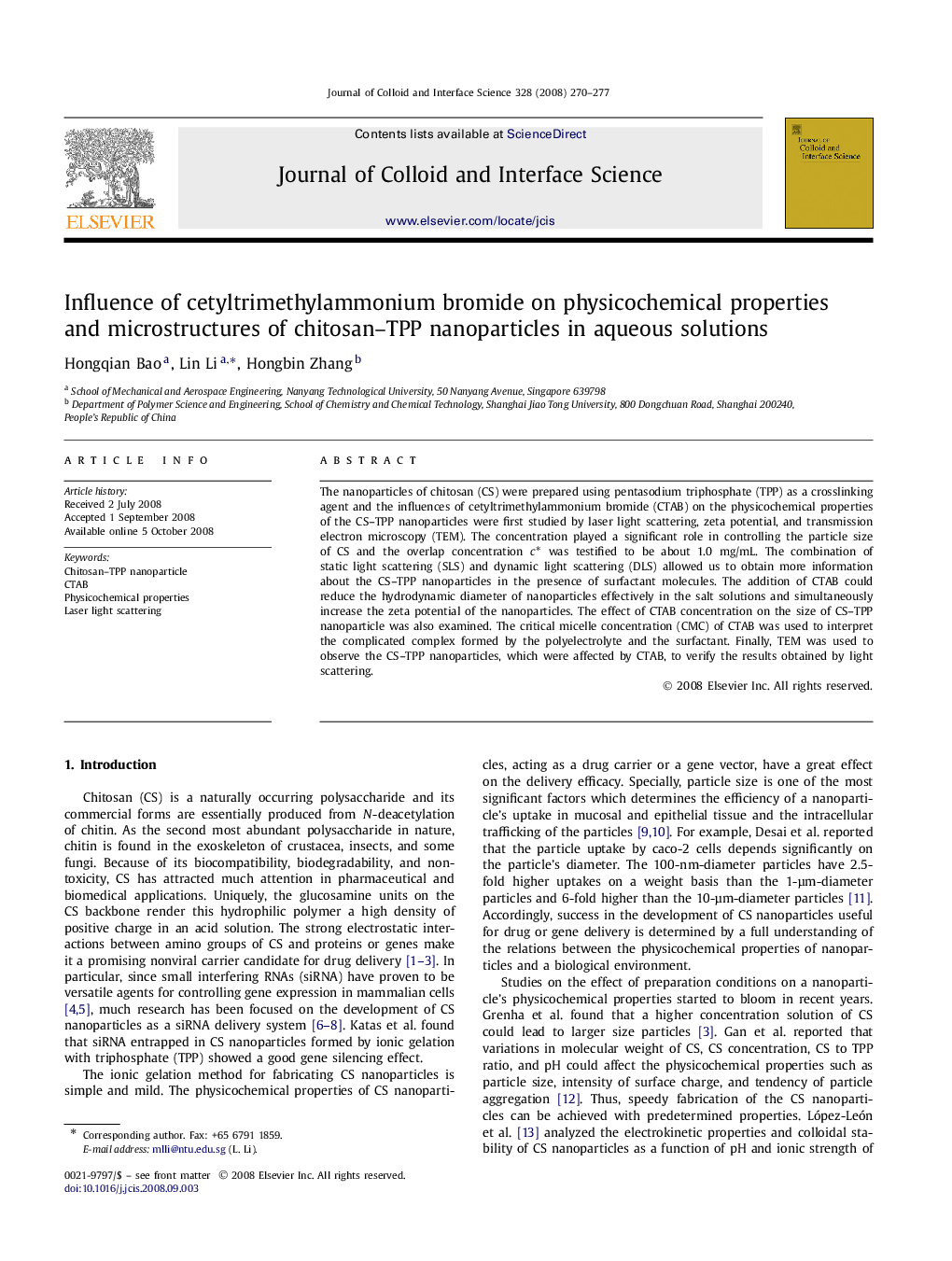| Article ID | Journal | Published Year | Pages | File Type |
|---|---|---|---|---|
| 611009 | Journal of Colloid and Interface Science | 2008 | 8 Pages |
The nanoparticles of chitosan (CS) were prepared using pentasodium triphosphate (TPP) as a crosslinking agent and the influences of cetyltrimethylammonium bromide (CTAB) on the physicochemical properties of the CS–TPP nanoparticles were first studied by laser light scattering, zeta potential, and transmission electron microscopy (TEM). The concentration played a significant role in controlling the particle size of CS and the overlap concentration c∗c∗ was testified to be about 1.0 mg/mL. The combination of static light scattering (SLS) and dynamic light scattering (DLS) allowed us to obtain more information about the CS–TPP nanoparticles in the presence of surfactant molecules. The addition of CTAB could reduce the hydrodynamic diameter of nanoparticles effectively in the salt solutions and simultaneously increase the zeta potential of the nanoparticles. The effect of CTAB concentration on the size of CS–TPP nanoparticle was also examined. The critical micelle concentration (CMC) of CTAB was used to interpret the complicated complex formed by the polyelectrolyte and the surfactant. Finally, TEM was used to observe the CS–TPP nanoparticles, which were affected by CTAB, to verify the results obtained by light scattering.
Graphical abstractChitosan (CS) chains form nanoparticles in the presence of a cationic surfactant CTAB. With increasing concentration, CTAB micelles reside on the surface of or inside nanoparticles, affecting the particle size of CS.Figure optionsDownload full-size imageDownload as PowerPoint slide
